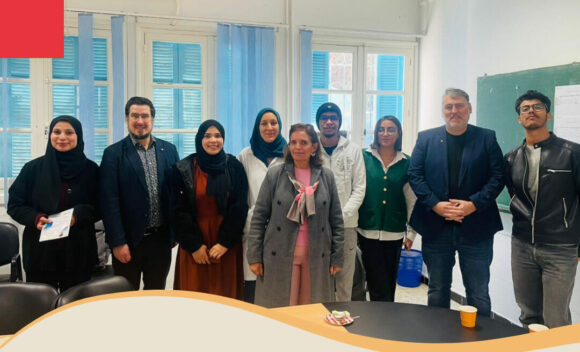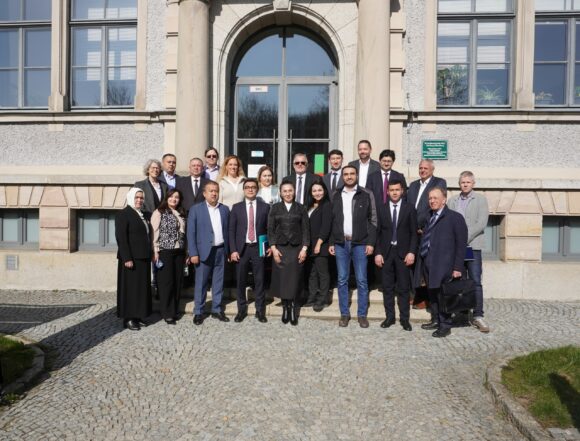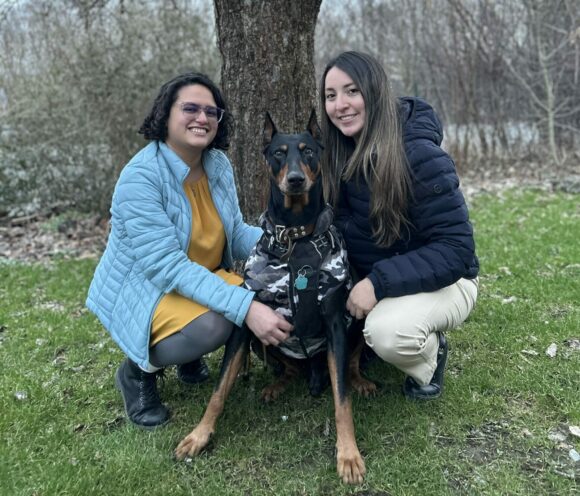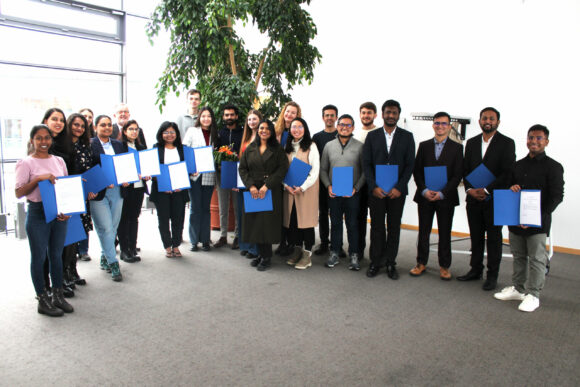The Interreg project Digital Regions has been running at Hof University of Applied Sciences since August 2019. The aim of the project is to strengthen the networking of eight European regions in the field of Industry 4.0 by exchanging proven projects and approaches. In the interview is the project team consisting of Anne-Christine Habbel, project manager and Katrin Müller, project collaborator.
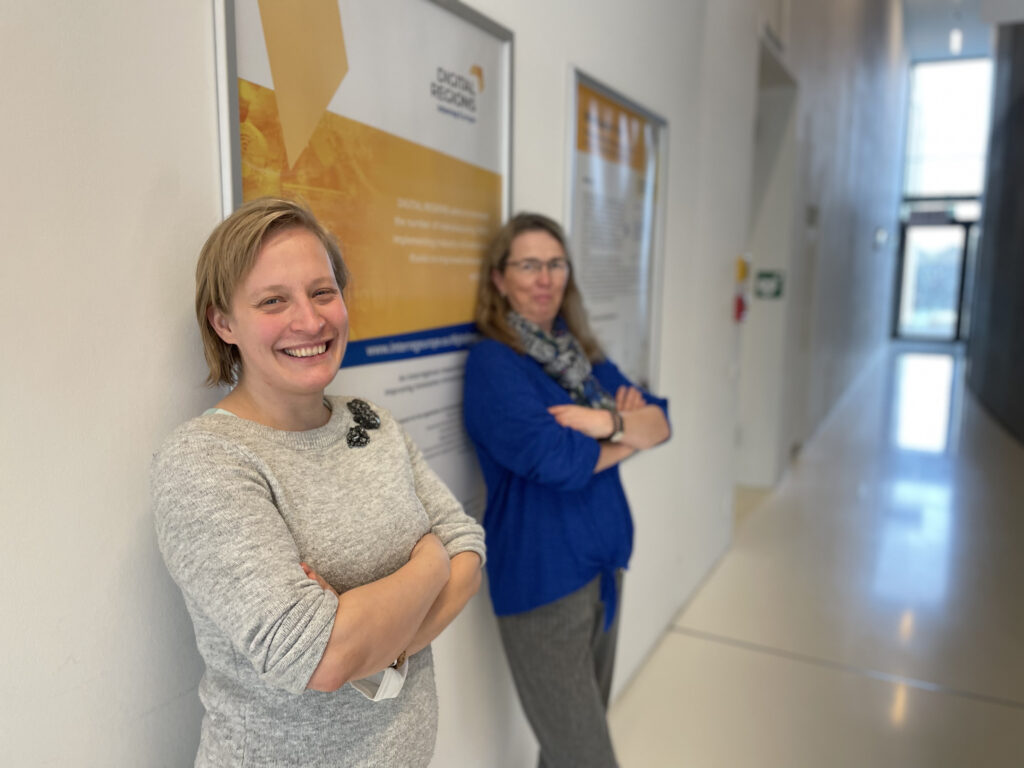
Why did you get involved in the project with iisys back then?
Anne-Christine Habbel (ACH) “Hof University has both a regional and an international orientation. The European orientation is becoming increasingly important. The basic idea of the project, to look over each other’s shoulders on the topic of digitalization together with other European regions, is a valuable opportunity for the university and the region. In the Digital Regions project, we meet at regular intervals with partners from Ireland, Portugal, Spain, Switzerland, Slovenia, Romania and Bulgaria at a virtual table and pass on ideas and approaches to each other. The project is precisely tailored to the needs of the region: Many small medium-sized enterprises and the world of Industry 4.0.”
What does that look like exactly – what is being done in Digital Regions?
Katrin Müller (KM): “Digital Regions is an INTERREG-funded project. So it’s based on European cohesion policy: the idea is that regions in Europe are very different, yet have common challenges and can find solutions together. The funding finances a network and thus the time needed for the project partners to sit down together with other European regions and collect what good ideas there are in the area of digitization. These in turn are presented to each other – And each partner shows in their own region what everyone else is good at. This way, ideas and solutions that someone else already has can be passed on. Tried and tested projects that would otherwise disappear in a drawer are taken up again here.”
Who in Upper Franconia are these ideas and solutions being shown to?
ACH: “For this purpose, each of the partners forms a group of regional players, the so-called stakeholder group. For Upper Franconia, the project team meets every six months with representatives from regional politics, chambers, business development and business associations to discuss what of these ideas makes sense for their own region. Feedback is also sought on the status of digitization in production and on the needs in the region. The end result is an action plan: What of our exchange remains as an idea or concrete project in the region? The second important component in the project is of a political nature: we want to give politicians advice on how to make funding in the area of digitization more accessible to companies.
We work on that by getting feedback from our regional action group, and our consortium leader, the Irish network ERNACT, ends up writing a joint strategy paper for regional policy with that.”
The project has been a great success and I am pleased that the vision of European cooperation has led to a very concrete exchange between eight rural regions.”
Anne-Christine Habbel
The project runs from August 2019 to July 2023. The project is coming to an end? How far along are you?
KM: “By mid-2022, we have clarified what ideas will be implemented in our regions. After that, the active phase of the project will be over. Until 2023, the so-called monitoring phase will then run – we will look at which of our projects and ideas were sustainable.”
Do we have common challenges in Europe, then?
ACH: “All partners want to transfer innovations from the field of Industry 4.0 more efficiently to interested companies. That is not always easy. The Biel Technology Park in Switzerland, for example, has found, much like us, that the range of funding and support available in its own region is broad, but confusing for companies.
Proven ways of building networks are also interesting to us. For example, our Irish partner, the European Projects Network ERNACT, has a network of technology gateways – 16 research institutes throughout Ireland with different expertise. A medium-sized company can now turn to this “technology gateway” network with its specific problem, and develop new or better products and services, and find smarter ways to do things. Through the Technology Gateway Network, they leverage the expertise of more than 300 industry-focused researchers along with the specialized equipment and facilities of the 11 technology institutes to access near-market innovations and solutions. Their effect has been to become the extended R&D facility of small and medium-sized enterprises. We at Hof University can offer the same for the region, so we’re looking at how the Technology Gateways work.”
What, then, has the exchange of ideas yielded in terms of concrete projects?
KM: “Our group of regional stakeholders really appreciated the collaboration and exchange of ideas during the project. We are responding to the desire to stay together and are working to make it more permanent in a new network.
At a university like the one in Hof, new projects are also being created on an ongoing basis in cooperation with companies and other stakeholders from the region. Stakeholders in the project are also involved. We have now fed ideas from other regions into this ongoing process, and we are very pleased that some project ideas have been enriched with our best practices.”
What ideas are those? Do the other seven regions have ideas, then, that can be applied in Upper Franconia?
KM “For example, our Portuguese partner, the Innovation Center of the Beira Interior Region, presented their IOTEC project to us: The project transferred innovative IoT technology to both the Portuguese Centro and the Spanish Castilla y León with great success. This collaboration across the Portuguese-Spanish border was supported by the INTERREG VA Spain-Portugal funding program. The region faces very similar challenges as Upper Franconia: How do we bring the technology to the companies in our regions as uncomplicated as possible?
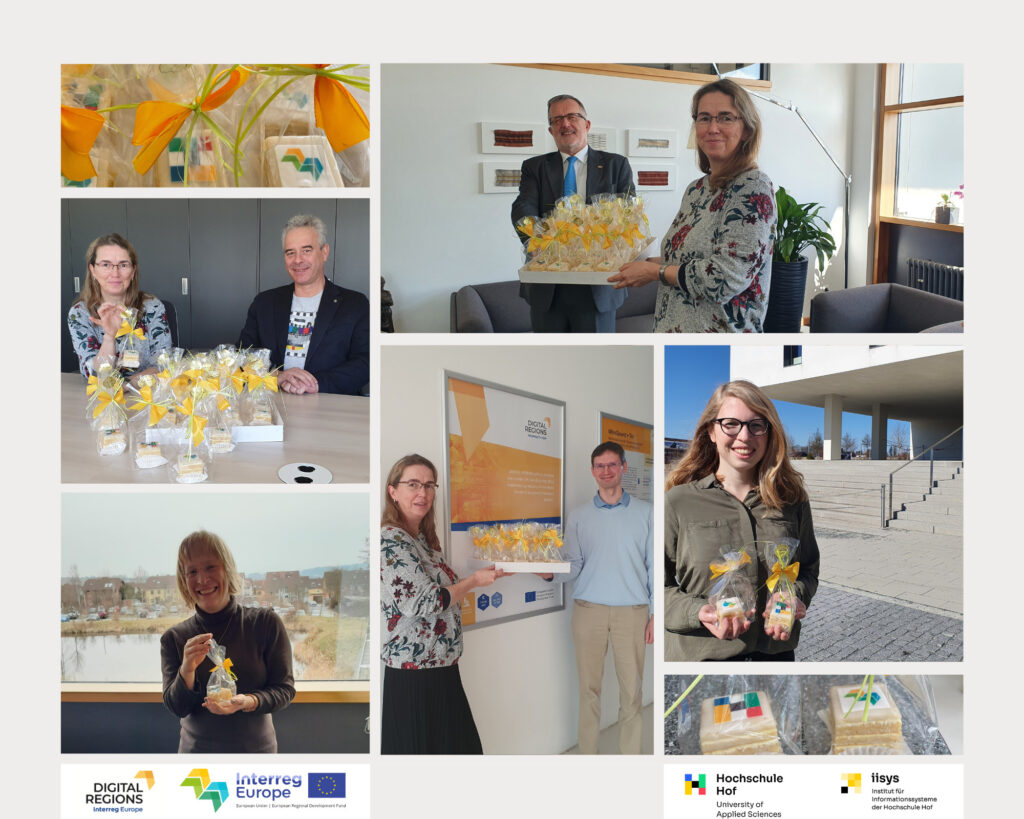
Within the Federal Republic of Germany, cross-border publicly funded research activities are rather rare, although there are only 30 km between Hof and Plauen. Even EU-funded projects such as the ERDF projects WiMiT and DAMMIT have not been able to cross the state border so far because the EU funds are administered separately by the state governments in Munich and Dresden respectively and transfers to companies in the other state are undesirable.
A successful cross-border, interterritorial orientation of the IOTEC project is reflected in the new Moonrise technology transfer project at the university, which works across the former Iron Curtain. Bavarian and Saxon partners are involved here. This is made possible by the REGION.innovativ funding from the German Federal Ministry of Education and Research.
In addition, through our contacts, we were able to submit our current Digital Regions consortium for a new project application in the European area.”
ACH: “And in the end, it has also brought a lot for the university itself. Previously, we had funding exclusively from the European Social Fund (ESF) or the Regional Development Fund (ERDF). Since we have been able to take more time to talk about Interreg and Horizon programs, more researchers are interested in them. We are noticing clear effects, which are also reflected in the planned applications for further projects. We are very excited to see what new Interreg or Horizon projects we will soon have. Keep your fingers crossed for us!”
More on Digital Regions, Campuls 1/2020
Video interview with Katrin Müller on the status of Digital Regions




